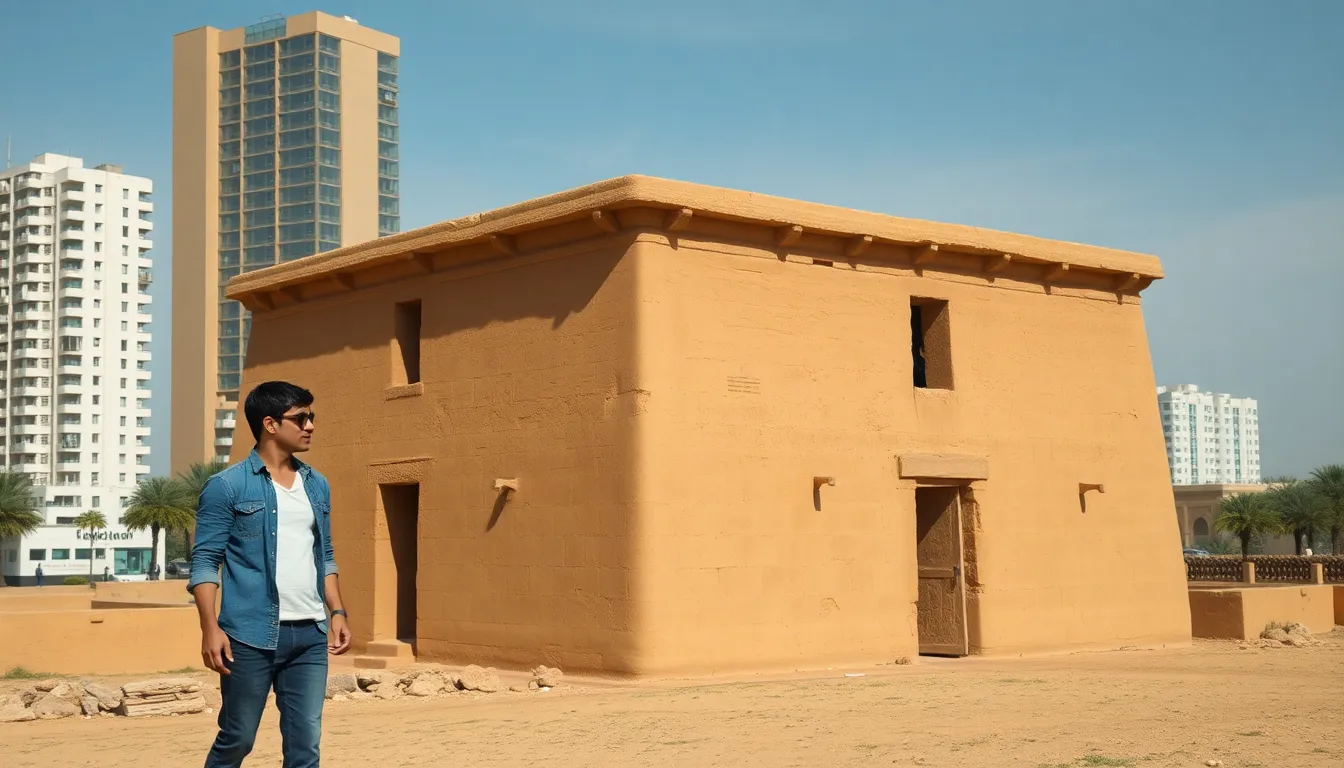House architecture is a fascinating blend of art and science, shaping not just the skyline but also the way people live and interact. From cozy cottages to sleek modern designs, each style tells a story about culture, environment, and innovation. Understanding these diverse architectural styles reveals how they reflect societal values and respond to changing needs.
As homeowners seek unique spaces that resonate with their lifestyle, architects continue to push boundaries, embracing sustainability and technology. This evolution in house architecture not only enhances aesthetics but also promotes functionality and efficiency. Exploring these trends offers insight into what makes a house truly feel like home.
Table of Contents
ToggleOverview of House Architecture
House architecture encompasses the design, layout, and aesthetics of residential structures. It integrates various elements, including space utilization, materials, and environmental considerations. Architectural styles evolve to reflect cultural influences, technological advancements, and shifting societal norms.
Key Elements of House Architecture
- Form and Function: The arrangement of spaces prioritizes livability, allowing for efficient movement and interaction within the home.
- Material Selection: Choices of materials, such as wood, brick, and glass, affect durability, aesthetic appeal, and energy efficiency.
- Sustainability: Architects incorporate eco-friendly practices, including energy-efficient systems and sustainable materials, to minimize environmental impact.
Popular Architectural Styles
- Traditional: Designs emphasize symmetry and incorporate elements like gabled roofs and intricate moldings.
- Modern: Features clean lines, open floor plans, and large windows, focusing on simplicity and functionality.
- Contemporary: Blends traditional and modern styles, often incorporating innovative materials and design techniques.
Influence of House Architecture on Society
House architecture reflects societal values, impacting lifestyle choices and community dynamics. It showcases how people interact with their environment and adapt to cultural shifts. Architects play a crucial role in shaping these spaces, using their expertise to balance aesthetics with practical needs.
Understanding house architecture opens a dialogue about living spaces and their connection to personal identity and cultural heritage.
Historical Development

House architecture evolved significantly over time, reflecting cultural shifts, technological advancements, and resource availability. This section explores key developments from ancient civilizations to the modern era.
Ancient Civilizations
Ancient civilizations made substantial contributions to house architecture, producing enduring styles that influenced future generations.
- Egyptians: They constructed homes using mud bricks, focusing on durability. Homes often had flat roofs and small windows, adapting to the hot climate.
- Greeks: They utilized columns and symmetry in their designs. The typical Greek house featured a central courtyard, promoting community and ventilation.
- Romans: They advanced building techniques, introducing concrete. Roman houses, or domus, included central atriums and emphasis on luxury and comfort.
These civilizations established architectural principles, blending functionality with aesthetics, which continue to resonate in modern designs.
Modern Era
The modern era marked a radical shift in house architecture, fostering innovation and diversity.
- Industrial Revolution: This period introduced mass production, allowing for the widespread use of new materials such as steel and glass. Craftsmen began to favor functionality, leading to simplified forms.
- Frank Lloyd Wright: He popularized the Prairie Style, emphasizing harmony with nature. His designs incorporated open floor plans and extensive use of natural light.
- Sustainable Practices: Recent decades emphasized eco-friendly designs. Energy-efficient systems and sustainable materials gained traction, aligning architecture with environmental responsibility.
These developments underscore a continuous dialogue between architecture and societal needs, shaping living spaces that reflect contemporary values and lifestyles.
Key Elements of House Architecture
House architecture comprises integral features that define both its structure and visual appeal. Understanding these key elements reveals the effectiveness of design in enhancing livability and functionality.
Structural Design
Structural design includes the framework supporting the entire building, ensuring safety and stability. Key aspects of structural design are:
- Foundation: The foundation distributes the weight of the house and anchors it to the ground. Common types include slab, crawl space, and basement foundations, each suited for different soil conditions and climate factors.
- Framing: Framing constitutes the skeleton of the house, using materials like wood, steel, or concrete to create walls, floors, and roofs. Different framing techniques, such as platform framing or balloon framing, influence construction time and material efficiency.
- Roofing: Roofing design impacts both aesthetics and functionality. Styles range from gabled and hipped roofs to flat and shed roofs, with materials such as asphalt shingles, metal, or tiles, each offering unique benefits like durability and weather resistance.
- Open Spaces: Design that prioritizes open spaces enhances flow and connectivity throughout the home. Strategies like open floor plans optimize light and movement, thereby creating a more inviting environment.
Aesthetic Features
Aesthetic features encapsulate the visual aspects that contribute to a house’s overall beauty. Important elements include:
- Facade: The facade serves as the visual representation of the house, showcasing its unique character. Materials like brick, stucco, or wood can define the style, offering textures and colors that reflect individual tastes and regional influences.
- Windows and Doors: Windows and doors enhance both form and function. Styles vary from traditional double-hung and casement windows to modern sliding and picture windows. Their placement affects natural light intake and views, while energy-efficient options contribute to sustainability.
- Decorative Elements: Architectural details such as molding, trim, and balconies add charm and personality to a house. These elements often highlight craftsmanship and can invoke various architectural styles, from colonial to contemporary.
- Landscaping: Landscaping integrates the home with its surroundings. Thoughtfully designed gardens, pathways, and outdoor spaces also enhance visual appeal and increase property value, fostering a seamless connection between nature and architecture.
Sustainable Practices in House Architecture
Sustainable practices in house architecture significantly contribute to reducing environmental impacts while enhancing livability. These practices focus on eco-friendly materials and energy efficiency.
Eco-Friendly Materials
Eco-friendly materials emphasize sustainability in residential construction. Such materials include:
- Bamboo: Rapidly renewable, bamboo offers strength and versatility, serving as an ideal flooring and structural element.
- Recycled Steel: Strong and sustainable, recycled steel eliminates the need for new materials, reducing environmental strain.
- Reclaimed Wood: Utilizing salvaged wood decreases deforestation and preserves historical character, enhancing the aesthetic appeal of homes.
- Low-VOC Paints: Low in volatile organic compounds, these paints promote healthier indoor air quality while minimizing harmful emissions.
Using these materials not only reduces waste but also fosters a healthier living environment.
Energy Efficiency
Energy efficiency in house architecture prioritizes reduced energy consumption. It entails:
- Insulation: High-quality insulation minimizes heat loss, improving comfort and lowering heating and cooling costs.
- Energy-Efficient Windows: Double or triple-pane windows improve insulation and minimize energy transfer, significantly enhancing comfort.
- Solar Panels: Integrating renewable energy sources like solar panels reduces reliance on fossil fuels and lowers electricity expenses.
- Smart Home Technologies: Automated systems that optimize energy use help monitor and control lighting, heating, and cooling based on occupancy.
Implementing these energy-efficient measures contributes to reduced carbon footprints and lower utility bills, making homes more sustainable and cost-effective.
Notable House Architecture Styles
House architecture features various styles that reflect different cultural values and preferences. Two prominent categories are contemporary and traditional, each with unique characteristics and significance.
Contemporary
Contemporary architecture showcases current trends, emphasizing minimalism, open spaces, and innovative materials. Key features include:
- Open Floor Plans: Contemporary homes often include large, open spaces that encourage flexibility and social interaction.
- Natural Light: Expansive windows and skylights maximize natural light, creating airy, bright interiors.
- Sustainable Elements: Eco-friendly materials and technologies, such as solar panels and green roofs, are standard, promoting energy efficiency and reducing environmental impact.
- Middle Ground with Nature: Landscaping integrates seamlessly with architecture, blurring the lines between indoor and outdoor spaces.
Contemporary styles adapt easily to evolving needs, making them increasingly popular among modern homeowners.
Traditional
Traditional architecture encompasses historical styles that reflect the past, often prioritizing symmetry and classic design elements. Key components include:
- Symmetrical Facades: Many traditional homes feature balanced proportions and formal layouts, creating a sense of harmony.
- Material Use: Brick, stone, and wood serve as common materials, providing durability and a timeless appearance.
- Decorative Features: Elements such as detailed moldings, closed porches, and gabled roofs enhance visual appeal and architectural richness.
- Cultural Influences: Various traditional styles, like Colonial, Victorian, and Craftsman, represent regional identities and historical context.
Traditional architecture remains relevant, appealing to those who appreciate enduring aesthetic values and craftsmanship.
House architecture serves as a mirror reflecting societal values and evolving lifestyles. It emphasizes the importance of design that’s not only aesthetically pleasing but also functional and sustainable. With a rich history that spans from ancient civilizations to contemporary innovations, architecture continues to adapt to the needs of its inhabitants.
As architects embrace eco-friendly practices and cutting-edge technologies, they create living spaces that enhance quality of life while minimizing environmental footprints. Understanding the nuances of house architecture allows individuals to appreciate the deeper connections between their homes and their cultural identities. Ultimately, the evolution of house architecture will remain a vital aspect of shaping communities and influencing how people live and interact with their surroundings.


